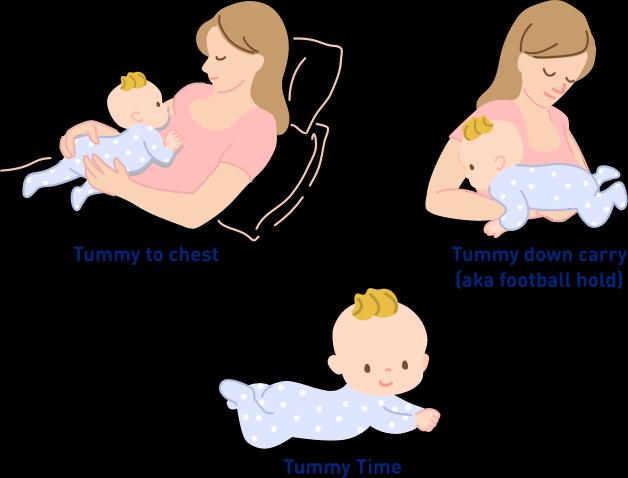Website maintenance scheduled Jan. 9-12; Rebates unavailable Jan. 5-20.
Placing your awake baby on their belly, aka tummy time, helps them develop muscles and coordination.
Before babies can learn to roll over or walk, they need to strengthen and develop muscles. To help them grow stronger, incorporate tummy time into their daily routines. Let’s explore what tummy time is, when to start, how to do it, the best positions, and why it's so important for your baby's growth and development.
Tummy time is when you place your baby on their stomach for a short time while they’re awake and supervised. With their weight on their forearms, they are encouraged to lift their head, helping build their neck, head, and upper body strength.
Tummy time can begin as early as a few days after birth—yes, even with their umbilical stump attached—as long as your baby is awake and alert. The first sessions can last around three to five minutes. As your baby grows and develops, you can gradually increase the amount of time they spend on their tummy.
Newborn tummy time helps establish a routine, so your baby will become used to (and perhaps even look forward to) this valuable part of their waking hours. Don't worry if your newborn can't lift their head high just yet—it will happen before you know it. By three months of age, your baby should spend at least 30-60 minutes daily on their stomach.
Tummy time should continue until your baby starts rolling over on both sides—usually when they're around six months old. At that point, your baby will discover all sorts of ways to enjoy their new skill, and dedicated tummy time will no longer be necessary. As the saying goes, they grow up (and roll over) so fast.
Tummy time is meant to happen only when your baby is awake—never while sleeping. You might try doing tummy time right after a diaper change or when your baby is well-rested. If your baby shows signs of being tired, or it's almost naptime, consider waiting until after their next sleep session.
When introducing tummy time, keep in mind that every baby is different. Some babies enjoy tummy time, but it can take others a while to adjust. Who can blame them? Their little muscles haven't experienced this kind of "workout" before! But as they get stronger, most babies grow to enjoy tummy time.
Ready to try tummy time with your little one? There are a few different positions you can use. Here are three of the most common.

To start newborns with tummy time, hold your baby on your chest or lap or use a rolled-up towel or small pillow to prop them up.
The football hold is an alternative to carrying your baby upright, but it still counts as tummy time. Carry your little one belly down over your forearm with one hand between the legs and under the tummy and trunk for support. The bend in your elbow supports their head.
Once your baby gets a little bigger, you can place them on their stomach with their arms in front of them on a blanket on the floor. When your baby is on the floor, it helps to get down and join them—and show them how excited you are to have fun! Talk to them, play with them, and encourage them to lift their head and look around.
To add to the tummy time fun, you can use toys or a mirror to engage your baby. The following are some ideas for incorporating these into your baby’s tummy time.
Your baby might not be able to move very far just yet, but these stimulating activities are helping them prepare to be on the move.
Tummy time is necessary because it helps your baby develop strong neck, back, and shoulder muscles. This helps them learn to roll over, crawl, and eventually walk. It also helps prevent flat spots on the back of the head, which can develop if a baby spends too much time on their back.
All information on Enfamil, including but not limited to information about health, medical conditions, and nutrition, is intended for your general knowledge and is not a substitute for a healthcare professional's medical identification, advice, or management for specific medical conditions. You should seek medical care and consult your doctor or pediatrician for any specific health or nutrition issues. Never disregard professional medical advice or delay seeking medical treatment, care, or help because of information you have read on Enfamil.